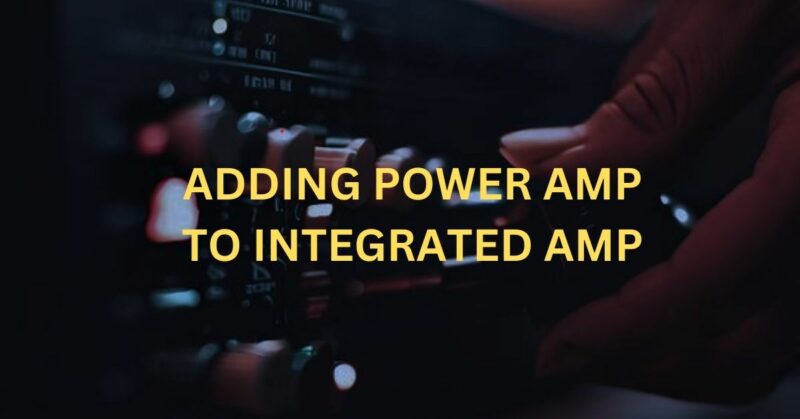In the world of audio systems, the quest for better sound quality is a perpetual journey. If you’re an avid audiophile or a music enthusiast, you’ve likely come across the idea of adding a power amplifier to your integrated amplifier. This article will delve into the benefits, considerations, and steps involved in enhancing your audio setup by incorporating a power amp.
Understanding Integrated Amplifiers
Integrated amplifiers serve as the heart of many audio systems, combining preamplifier and power amplifier functionalities into a single unit. While integrated amps can produce impressive sound quality, they sometimes lack the power necessary to drive demanding speakers. This is where a power amp comes into play.
The Benefits of Adding a Power Amp
By adding a power amp to your integrated amp, you can elevate your audio experience to new heights. A power amp offers increased wattage, allowing it to deliver higher levels of clean, distortion-free power to your speakers. This results in improved dynamics, greater detail, and enhanced bass response. Moreover, a power amp can better handle low-impedance or inefficient speakers, providing optimal performance even at high volumes.
Compatibility and Considerations
Before embarking on the journey of adding a power amp, it’s crucial to ensure compatibility with your existing integrated amplifier. Check if your integrated amp has preamp outputs or a preamp/power amp input. This will serve as the connection point for your power amp. Additionally, consider the power requirements of your speakers and choose a power amp that can adequately drive them.
Connection and Setup
Once you have selected a compatible power amp, the next step is connecting it to your integrated amp. Using RCA or XLR cables, connect the preamp outputs of your integrated amp to the corresponding inputs of the power amp. Ensure proper grounding and cable management to avoid interference. Finally, power on your integrated amp and power amp, and you’re ready to experience the enhanced audio quality.
Fine-tuning and Optimization
After connecting the power amp, take some time to fine-tune your audio system. Adjust the gain settings on your integrated amp and power amp to achieve the desired balance. Consider factors like speaker sensitivity, room acoustics, and personal preference while making these adjustments. Experiment with different speaker placements and configurations to optimize the sound output.
Speaker Bi-amping and Tri-amping
Adding a power amp opens up the possibility of bi-amping or tri-amping your speakers. Bi-amping involves using separate power amps for the low-frequency drivers and high-frequency drivers, while tri-amping adds a third amp for the mid-range drivers. This configuration allows for precise control over each frequency range, resulting in improved clarity and separation.
Adding a power amp to your integrated amp is an excellent way to unlock the true potential of your audio system. By providing increased power and driving capability, a power amp can transform your listening experience. However, it’s essential to ensure compatibility, follow proper connection and setup procedures, and fine-tune the system for optimal performance. With careful consideration and attention to detail, you’ll be rewarded with an audio setup that delivers breathtaking sound quality.

